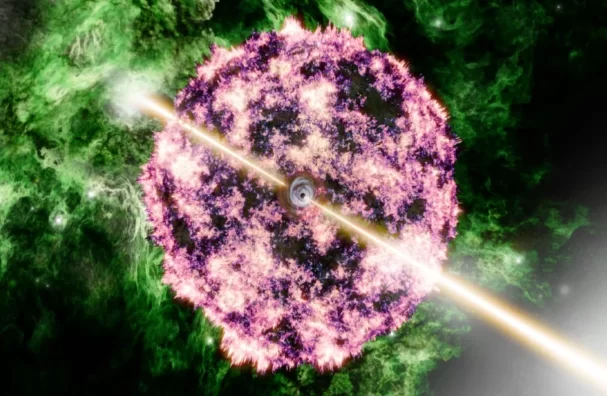
The study of the universe is a fascinating endeavor, ceaselessly challenging our understanding and presenting new mysteries to solve. One such enigma revolves around the origin of precious metals like gold and platinum, and their connection to the most violent and powerful explosions known to occur in the cosmos.
Gamma-ray bursts (GRBs) are recognized as the most potent and violent explosions known in the universe. These astounding phenomena can emit light with brightness up to a quintillion (a billion billion) times greater than our Sun.
On October 9, 2022, an event known as GRB 221009A, or B.O.A.T. — standing for the “brightest of all time” — was recorded. This extraordinary explosion was confirmed to have been caused by the collapse and subsequent explosion of a massive star.
The origin of heavy elements such as gold and platinum presents one of the most significant unsolved mysteries in astronomy. It has long been speculated that evidence of these heavy metals might be discovered in newly-formed supernovae.
However, an extensive study using the James Webb Space Telescope found no such signatures in the aftermath of B.O.A.T. This lack of evidence suggests that even the most energetic GRBs might not be the cosmic forges where these heavy elements are created.
The study, led by Northwestern University’s Peter Blanchard, used the James Webb Space Telescope to confirm B.O.A.T.’s origin. The explosion was found to be the result of a massive star’s collapse. However, the absence of heavy element signatures led to new questions about these elements’ origin.
“When we confirmed that the GRB was generated by the collapse of a massive star, that gave us the opportunity to test a hypothesis for how some of the heaviest elements in the universe are formed. We did not see signatures of these heavy elements, suggesting that extremely energetic GRBs like the B.O.A.T. do not produce these elements.” – Northwestern’s Peter Blanchard
The researchers’ findings don’t entirely rule out the possibility of GRBs contributing to the formation of heavy elements. However, it does imply that not all GRBs are capable of such synthesis.
B.O.A.T. was so brilliant that when its gamma-ray light washed over Earth, it saturated most of the planet’s gamma-ray detectors. The actual explosion occurred approximately 2 billion light-years away, in the direction of the constellation Sagitta, and lasted for only a few hundred seconds.
